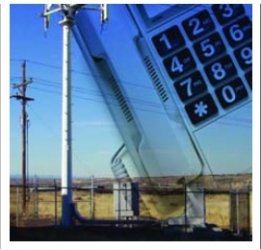Blow to FWP - DoT directive limits fixed wireless service

-
In a controversial move, the Department of Telecommunications (DoT) has directed that wireline services alone can be treated as "fixed" services, which, in layman terms, means that last mile connectivity has to be through a copper cable, the way BSNL, MTNL and Bharti connect their landline users.
This has come as a major blow to fixed wireless phone (FWP) operators like Tata Teleservices Limited (TTSL), Reliance Infocomm, HFCL and Shyam Telelink, which use wireless in local loop (WLL) technology for last mile connectivity.
The DoT order, once implemented, will remove FWP services from the ambit of fixed line operations. Instead, they will be categorised at par with mobile services or termed limited mobile services, the rationale being that these phones are not confined to the premises of the subscriber.
This being the case, FWP operators will now be liable to pay access deficit charges (ADC), which, in turn, will increase the cost of calls for FWP users.
The decision on FWP was taken at a high-level DoT meeting in late August, and was put up for approval by the Ministry of Communications. But even before the approval could come through, DoT directed that the 6 million fixed wireless connections in the country be treated as limited mobile services.
"The services offered by FWP service providers do not conform to the scope and character of fixed services. Instead, they provide the character of limited mobile services," the DoT notice stated. It further said that the word "fixed" should be clearly understood and does not require a separate definition, and that the measures taken by FWP operators to restrict mobility have so far been "unsatisfactory".
The DoT order has apparently come as a response to a plea by the Cellular Operators Association of India (COAI), asking for a level playing field between all mobile services. The GSM association felt that the playing field was currently tilted towards CDMA-based fixed-wireless operators, who were offering the functionality of limited mobility services under the guise of fixed-wireless services, without sharing the ADC burden.
DoT applied the same logic when it earlier ruled that TTSL's FWP service, Walky, which is marketed as a fixed line service, was actually a limited-range mobile service and infringed the terms and conditions of the company's licence.
Recently, the Telecom Disputes Settlement Appellate Tribunal (TDSAT) also termed Walky as a limited mobile service. Turning down the Tata petition, the TDSAT order stated: "Walky should not be regarded as anything else but WLL(M). As per the licensing conditions, fixed wireless service has to be provided within the subscriber premises, wherever it is not, it has to be treated as WLL(M).
Not surprisingly, the FWP service providers are upset. They point out that the DoT order will adversely impact the teledensity of the country as it will increase call tariffs by nearly 80 per cent on account of the ADC levy of Re 0.30 per minute. Users will have to pay Rs 2.10 per three minutes instead of the current Rs 1.20.
Meanwhile, BSNL, which is the beneficiary of the ADC levy, is counting its potential gains. It has calculated that ADC collections from FWP operators should net it Rs 4.5 billion: Rs 3 billion from TTSL, Rs 400 million from MTNL, and the balance from other operators.
However, it may be counting its chickens too soon. TTSL, for one, is exploring the option of moving the apex court against the order. Other operators too have indicated that a legal battle might be mounted against the DoT order. Also, the service providers are asking that subscribers enrolled before the DoT directive should be allowed to continue under the existing regime and only new subscribers (post the directive) should be governed by the new policy.
For the moment, the government has reportedly indicated that it is against collecting ADC from FWP operators until all issues relating to mobility are sorted out. DoT too has stated that it is unlikely to collect ADC for these services immediately, and would allow operators to work out an alternative to confine FWP services to the installation premises. It is likely to give FWP operators three months' time to adhere to its earlier mandate.
According to industry analysts, it is prudent on DoT's part to not hasten implementation of the directive as the move could have far bigger long-term ramifications. Notably, almost all the growth in fixed line services over the past three years has come from use of WLL technology by FWP operators.
Also, the impact would be much higher in rural and geographically remote areas where laying of copper or wireline networks is prohibitive. In such cases, WLL technology is claimed to be the only solution, though DoT officials counter this by saying that the "numbers reveal that these phones are being used more in cities than elsewhere".
The future course of action will only be clear once all related issues are sorted out. Issues like, when should FWP operators start paying ADC, if indeed they have to pay at all. And, importantly, should FWP be recognised as limited mobility or not in rural India.
- Most Viewed
- Most Rated
- Most Shared
- Related Articles
- Manufacturing Hub: India emerges as a ke...
- TRAI performance indicator report for Se...
- Prashant Singhal, partner, telecom indus...
- 2G spectrum scam: continuing controversy
- An Eventful Year: Telecom highlights of ...
- Telecom Round Table: TRAI’s spectrum p...
- Manufacturing Hub: TRAI recommends indig...
- Linking Up: ITIL to merge with Ascend
- High Speed VAS - Killer applications w...
- Bharti Airtel seals deal with Zain - Zai...






